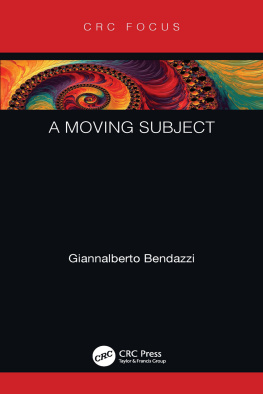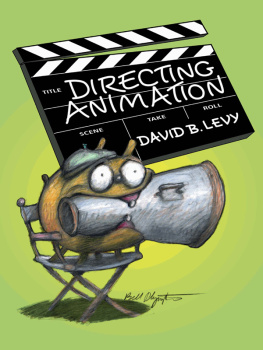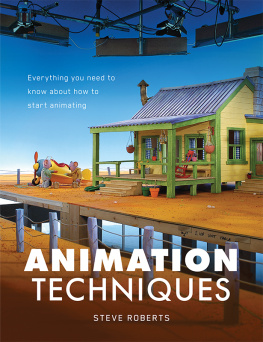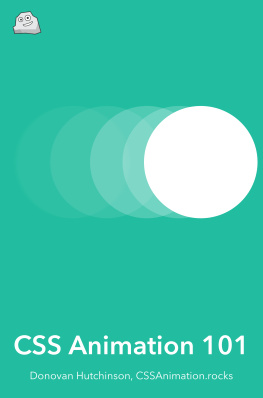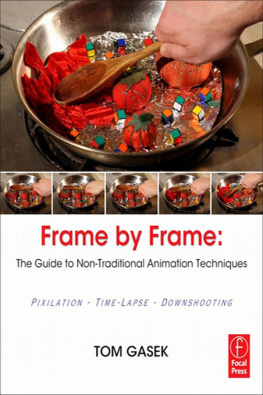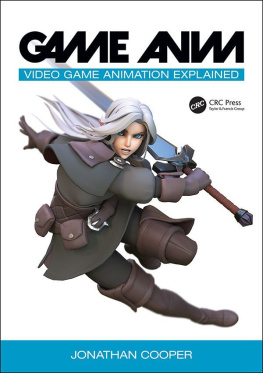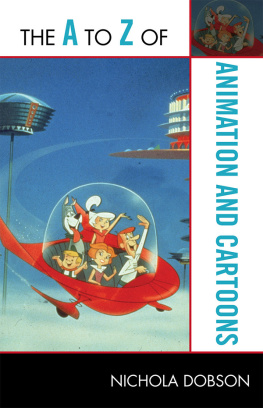A Moving Subject
Focus Animation
Series Editor:
Giannalberto Bendazzi
The Focus Animation Series aims to provide unique, accessible content that may not otherwise be published. We allow researchers, academics, and professionals the ability to quickly publish high impact, current literature in the field of animation for a global audience.
This series is a fine complement to the existing, robust animation titles available through CRC Press/Focal Press.
Series Editor Giannalberto Bendazzi , currently an independent scholar, is a former Visiting Professor of History of Animation at the Nanyang Technological University in Singapore and a former professor at the Universit degli Studi di Milano. We welcome any submissions to help grow the wonderful content we are striving to provide to the animation community: giannalbertobendazzi@gmail.com.
Twice the First: Quirino Cristiani and the Animated Feature Film
Giannalberto Bendazzi
Floating Worlds: A Short History of Japanese Animation
Maria Roberta Novielli
Redesigning Animation United Productions of America
Cinzia Bottini
Puppetry, Puppet Animation and the Digital Age
Rolf Giesen
Infinite Animation: The Life and Work of Adam Beckett
Pamela Taylor Turner
Vclav Trojan: Music Composition in Czech Animated Films
Marco Bellano
A Moving Subject
Giannalberto Bendazzi

First edition published 2021
by CRC Press
6000 Broken Sound Parkway NW, Suite 300, Boca Raton, FL 33487-2742
and by CRC Press
2 Park Square, Milton Park, Abingdon, Oxon, OX14 4RN
2021 Taylor & Francis Group, LLC
CRC Press is an imprint of Taylor & Francis Group, LLC
Reasonable efforts have been made to publish reliable data and information, but the author and publisher cannot assume responsibility for the validity of all materials or the consequences of their use. The authors and publishers have attempted to trace the copyright holders of all material reproduced in this publication and apologize to copyright holders if permission to publish in this form has not been obtained. If any copyright material has not been acknowledged please write and let us know so we may rectify in any future reprint.
Except as permitted under U.S. Copyright Law, no part of this book may be reprinted, reproduced, transmitted, or utilized in any form by any electronic, mechanical, or other means, now known or hereafter invented, including photocopying, microfilming, and recording, or in any information storage or retrieval system, without written permission from the publishers.
For permission to photocopy or use material electronically from this work, access
Trademark notice : Product or corporate names may be trademarks or registered trademarks and are used only for identification and explanation without intent to infringe.
ISBN: 978-0-367-56185-7 (hbk)
ISBN: 978-0-367-56689-0 (pbk)
ISBN: 978-1-003-09897-3 (ebk)
For Ilaria
Contents
A FORMER PROFESSOR AT THE Nanyang Technological University of Singapore and the Universit degli Studi of Milan, Italian-born Giannalberto Bendazzi has thoroughly investigated the history of animation for more than forty years. A founding member of the Society for Animation Studies, he has authored or edited various classics in various languages and has lectured extensively on every continent. He received an honorary doctorate from Lisbon University in 2019. He is the editor of the Focus Animation series of books for CRC Press. He also is the author of the three-volume set Animation - A World History (CRC Press 2016).
T HE READER WILL FIND diverse essays collected in this book, and I am confident that they will not view them as disparate. The same standpoint and the same love are actually at the base of historical research like the one on the first abstract colour experiments, of a theoretical effort at defining the medium, of a reasoning on early African animated films, and so on, from 1972 to today. In my long career in animation I have contributed a world history, a monograph on pioneer Quirino Cristiani, and an anthological monograph on master Alexandre Alexeieff. It seemed fair to me not to deprive the collected essays (otherwise unobtainable) to readers who value my work.
T HE BROTHERS A RNALDO G INANNI Corradini (18901982) and Bruno Ginanni Corradini (18921976) were born in Ravenna, Italy, into an aristocratic (they were earls) and educated family. At a very early age, they started cultivating poetry, writing, and painting. They also took an active role in the debate between Tradition and Modernism that agitated the realms of literature, art, and music in Italy, from the turn of the century until the outbreak of World War I. Arnaldo mainly involved himself with painting, while Bruno focused more on literature.
Originally published in Animation Journal , Tustin, California, Spring 1996. Updated version.
After 1914, the brothers joined the Futurist movement, where they used pseudonyms, Arnaldo Ginna and Bruno Corra, to distinguish their separate identities. For convenience we will refer to them by their pseudonyms in this chapter, even though some statements were actually published under their true names.
Fascinated by the possible correspondence between sound and colour, in about 1909 the brothers created a chromatic piano whose keys corresponded to a parallel number of coloured light bulbs. Subsequently they carried out several experiments with what we now call direct painting on film, abstract cinema, or coloured abstract animation.
At first, they made a number of tests, including removing the projection shutter and projecting alternating frames of different colours to get an optical mixture of another colour. They then composed four films by painting directly on the surface of clear film strips to explore four different aspects of synaesthesia or correspondences between the arts. Lacking exact titles, the films can be called a Thematic Development of a Harmony of Colours based on a divisionist painting by Segantini (it was eighty metres long, or ten minutes running time); a Study of Effects between Four Colours, Two Complementary Pairs; a Translation and Adaptation of Mendelssohns Spring Song Intertwined with a Theme from a Chopin Waltz; and a Translation of Mallarms Poem Flowers into Colours. The longest of these films was more than 200 metres around twelve minutes in projection. They subsequently sketched three more experiments on film strips (it is not clear whether they fully completed the films in a rough form or just made sample frames like a storyboard).
These three works explored abstract visual phenomena. One begins with a pure green screen, then a tiny red star appears in the middle, grows until the screen is all red, and then green spots burst out and reclaim the whole screen, making it all green again for a whole minute. The second work develops a white and a yellow line moving over a solid blue background. The third shows seven cubes, each a colour of the rainbow, moving, layering, and warping against a black background. The last two films, again about eleven minutes in length, bear formal titles. The Rainbow is a symphony in which the spectrum of colours throb, bubble, drown, and explode against a grey background. In The Dance, the dominant colours crimson, violet, and yellow continuously separate, unite, and whirl upwards as the most agile pirouettes of spinning tops.

